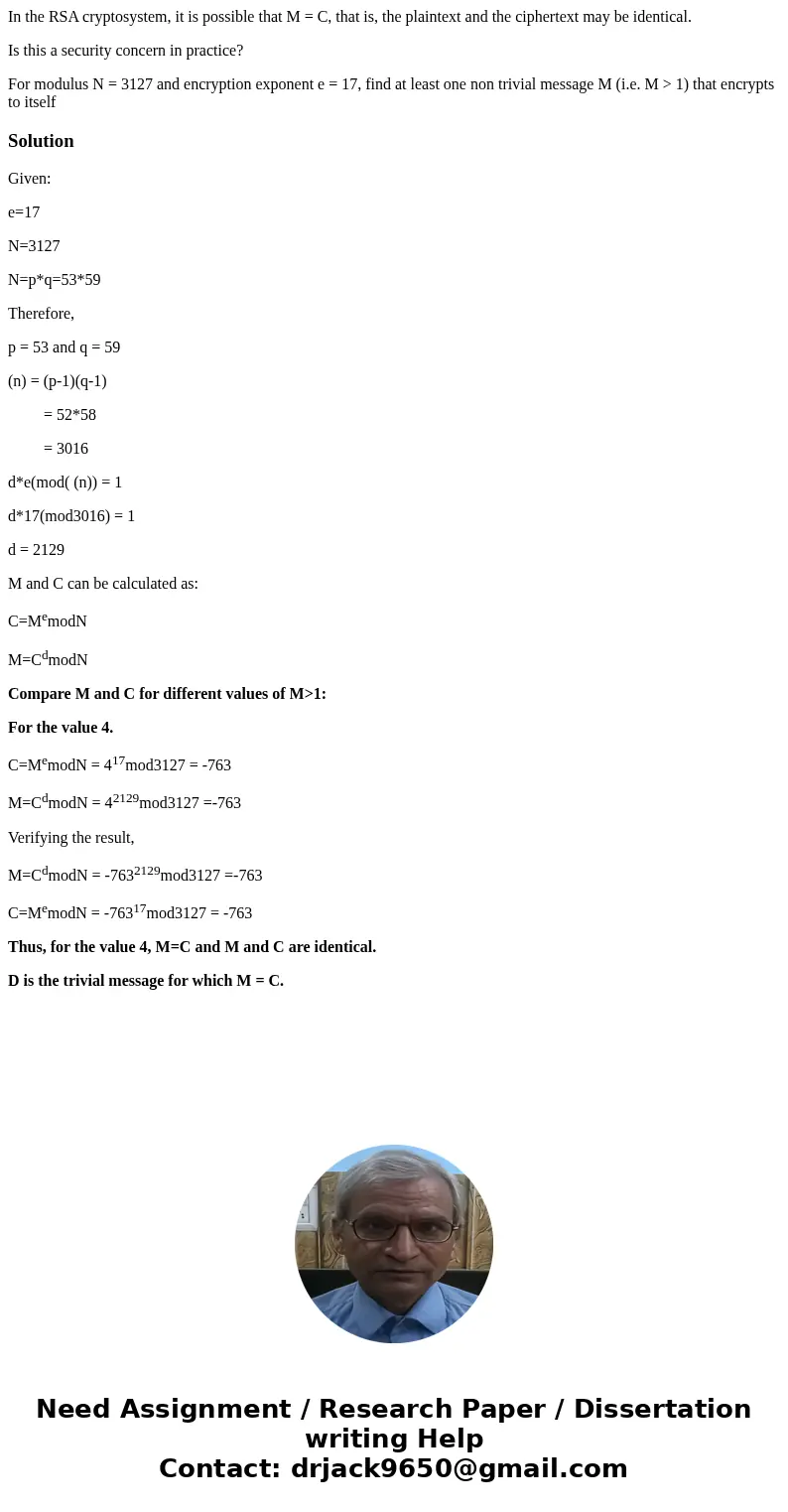In the RSA cryptosystem it is possible that M C that is the
In the RSA cryptosystem, it is possible that M = C, that is, the plaintext and the ciphertext may be identical.
Is this a security concern in practice?
For modulus N = 3127 and encryption exponent e = 17, find at least one non trivial message M (i.e. M > 1) that encrypts to itself
Solution
Given:
e=17
N=3127
N=p*q=53*59
Therefore,
p = 53 and q = 59
(n) = (p-1)(q-1)
= 52*58
= 3016
d*e(mod( (n)) = 1
d*17(mod3016) = 1
d = 2129
M and C can be calculated as:
C=MemodN
M=CdmodN
Compare M and C for different values of M>1:
For the value 4.
C=MemodN = 417mod3127 = -763
M=CdmodN = 42129mod3127 =-763
Verifying the result,
M=CdmodN = -7632129mod3127 =-763
C=MemodN = -76317mod3127 = -763
Thus, for the value 4, M=C and M and C are identical.
D is the trivial message for which M = C.

 Homework Sourse
Homework Sourse